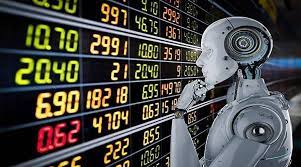
Forex trading, also known as foreign exchange trading, involves the buying and selling of currencies in the foreign exchange market. It is one of the largest and most liquid financial markets globally, with an average daily trading volume exceeding $6 trillion. Forex trading offers numerous opportunities for individuals to participate in the global financial forex robot , but it also comes with risks. This guide provides an overview of forex trading for beginners, outlining key concepts, strategies, and tips to help you get started.
Understanding the Forex Market
The forex market operates 24 hours a day, five days a week, across different time zones worldwide. It consists of a network of banks, financial institutions, hedge funds, corporations, and individual traders, all buying and selling currencies. The primary objective of forex trading is to profit from the fluctuations in currency prices. Unlike stocks or commodities, currencies are traded in pairs, such as EUR/USD (Euro/US Dollar) or USD/JPY (US Dollar/Japanese Yen).
Key Concepts in Forex Trading
- Currency Pairs: In forex trading, currencies are quoted in pairs, with the first currency being the base currency and the second currency being the quote currency. The exchange rate indicates how much of the quote currency is needed to purchase one unit of the base currency.
- Leverage: Forex trading allows traders to use leverage, which means they can control larger positions with a relatively small amount of capital. While leverage can amplify profits, it also increases the risk of losses.
- Pips: A pip is the smallest unit of price movement in the forex market, typically equivalent to 0.0001 for most currency pairs. Profits and losses in forex trading are usually measured in pips.
- Bid and Ask Price: The bid price is the price at which a trader can sell a currency pair, while the ask price is the price at which they can buy it. The difference between the bid and ask price is known as the spread.
Getting Started with Forex Trading
To start trading forex, you’ll need to open an account with a forex broker. Choose a broker that is regulated and offers a user-friendly trading platform. Once you have opened an account, you can fund it and start trading. It’s important to start with a demo account to practice trading without risking real money.
Forex Trading Strategies
There are several trading strategies used in forex trading, including:
- Day Trading: Day traders buy and sell currencies within the same trading day, aiming to profit from short-term price movements.
- Swing Trading: Swing traders hold positions for a few days to a week, aiming to profit from medium-term price movements.
- Position Trading: Position traders hold positions for weeks to months, aiming to profit from long-term trends in the market.
- Technical Analysis: Technical analysis involves using charts and technical indicators to analyze past price movements and forecast future price movements.
- Fundamental Analysis: Fundamental analysis involves analyzing economic indicators, central bank policies, and geopolitical events to forecast currency price movements.
Risk Management in Forex Trading
Risk management is crucial in forex trading to protect your capital. Some key risk management techniques include:
- Using Stop-Loss Orders: A stop-loss order is an order placed with a broker to sell a security when it reaches a certain price. It helps limit losses in case the market moves against your position.
- Diversifying Your Trades: Diversification involves trading multiple currency pairs to spread the risk.
- Using Proper Position Sizing: Proper position sizing involves determining the amount of capital to risk on each trade based on your risk tolerance and trading strategy.
Conclusion
Forex trading offers exciting opportunities for individuals to participate in the global financial markets and potentially profit from currency price movements. However, it’s essential to understand the risks involved and to develop a sound trading plan and risk management strategy. By educating yourself and practicing with a demo account, you can increase your chances of success in forex trading.